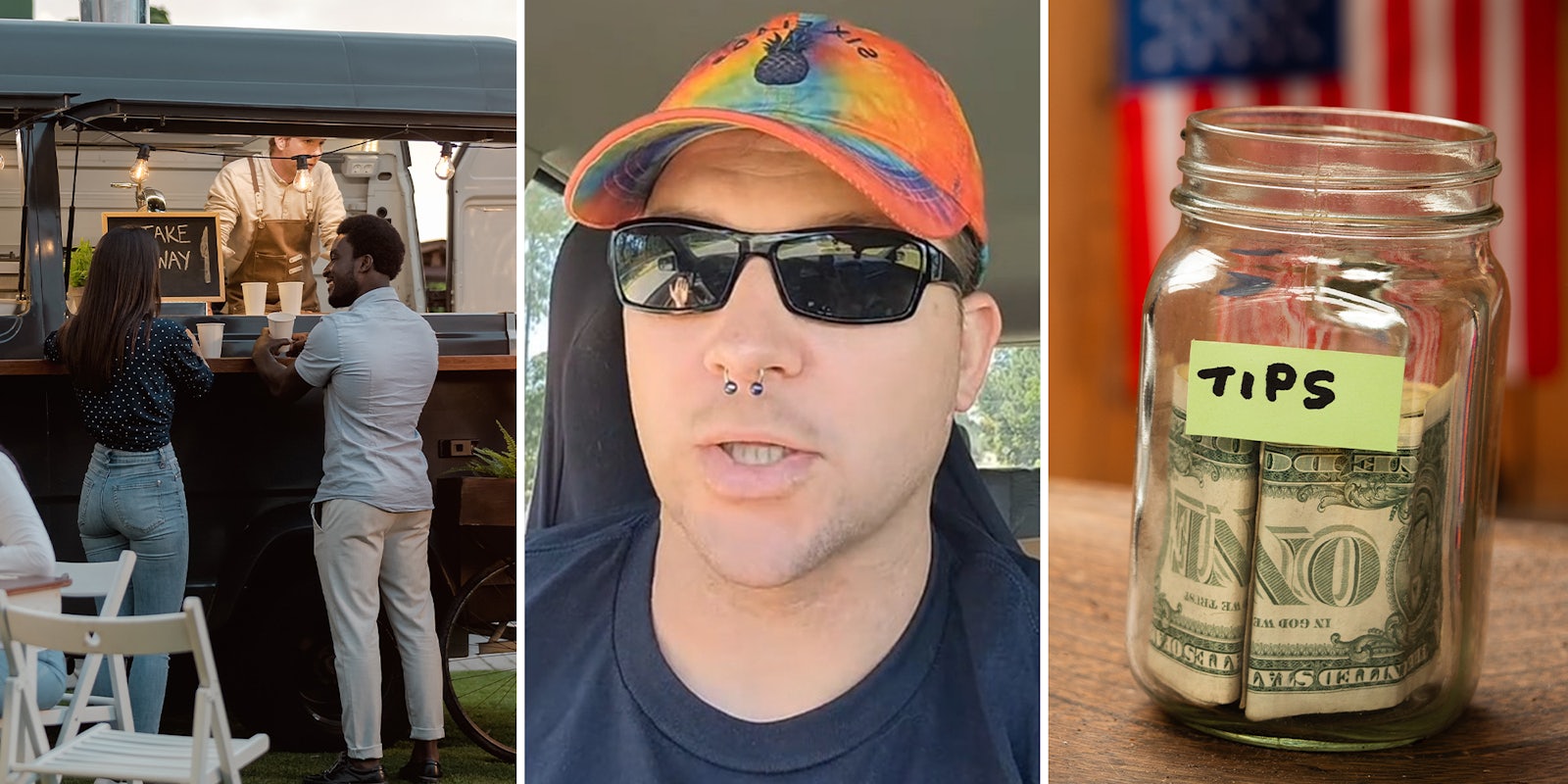If You Want More Money, Raise the Price of Your Food

Picture this: you’ve just ordered a delicious meal from a food truck, your mouth watering in anticipation. As you’re about to pay, the owner flips the POS system around, and there it is—the request for a tip. But wait, who exactly is this tip for? Cue the confusion and a bit of frustration as you think, shouldn’t the price of the food just reflect what the owner needs to make?
This exact scenario unfolded for Jerry, a popular TikTok creator, sparking a wave of debates. Jerry, in a video that has racked up over 474,000 views, dives into the peculiar tipping situation he encountered at a local food truck. And boy, does he have some strong feelings about it!
Jerry’s Policy on Tipping
“Have you seen the video of the guy who said, ‘If I have to pay before I get my food, I’m not tipping’? Well, I’ve adopted that policy, I took that to heart,” Jerry begins in his video. He recounts his experience from the previous night where the owner of the food truck swung the POS system around asking for a tip directly after he ordered and paid.
“Who the f*** is the tip for?” he exclaims. Jerry makes a good point here. If you’re the owner, setting your prices and generating your own paycheck, why should customers feel pressured to tip?
To drive his point home, Jerry mentions his stint working every back-of-house job there is in the restaurant business. During those years, tipping was a way to supplement the low wages of employees, not to line the pockets of business owners. So, the expectation of tipping the food truck owner doesn’t quite sit right with him.
Imagine Other Scenarios
He paints a vivid picture, too, saying, “Imagine that anywhere other than a food truck. You go into your local TGI Fridays and when you’re done eating, you leave a few bucks on the table and say, ‘This is for the franchise owner for the good work they’re doing.’ No! You wouldn’t f***ing do that.”
Jerry firmly believes he would rather pay a higher set price for his food than be guilted into tipping. His preference? “I would rather pay $15 for whatever I’m getting than pay $12 and then feel guilted into tipping the other $3,” he argues as his video concludes.
Viewers Weigh In
Jerry’s video sparked a lively discussion in the comments. Many viewers voiced their opinions, sharing a mix of agreement and dissent.
“My rule is if I stand at a counter or sit in my vehicle to order, fill my own drinks, or bus my own table, no tip. A tip is for service during a meal, not the preparation of my order,” one user expressed.
Another viewer shared their thoughts on corporate responsibility: “I understand tipping small business waiters. But why can’t corporate restaurants just pay a livable wage and not rely on their OWN consumers to cover their employees’ salaries?”
One user, disillusioned by the tipping culture entirely, said, “I stopped going to any restaurant because of this.”
Yet another mentioned the role of technology in this tipping conundrum, stating, “I think a lot of the apps that these places use automatically show a tip screen. They are not always expecting a tip. Some are embarrassed that it ask.”
What is ‘Tipping Fatigue’ and Are POS Systems to Blame?
Tipping culture in the U.S. has been a hot topic for years, and with the rise of digital payment systems, it’s only become more pronounced. According to the National Restaurant Association, one downside is that these POS systems often nudge customers towards tipping, even in situations where it may not traditionally be expected.
This constant prompting has led to what’s being called ‘tipping fatigue.’ Customers are feeling the heat, asked to tip in circumstances that weren’t common before, and often at higher percentages. This relentless pressure can take away from the enjoyment of a meal or service.
The National Restaurant Association suggests that to alleviate this stress, restaurants should be transparent about their tipping policies. Should tips be suggested as dollar amounts or percentages? For quicker service spots, small dollar amounts might make more sense, while for dine-in settings, percentages could be more appropriate. Above all, ensuring excellent service remains the cornerstone of the dining experience.
So, where do we go from here? Maybe it’s time for a broader conversation about fair wages in the food industry, and perhaps a little bit of reflection on how we, the customers, interact with these evolving norms.
Take Jerry’s advice or form your own tipping policy, but one thing’s for sure—this conversation is far from over. What’s your take?






